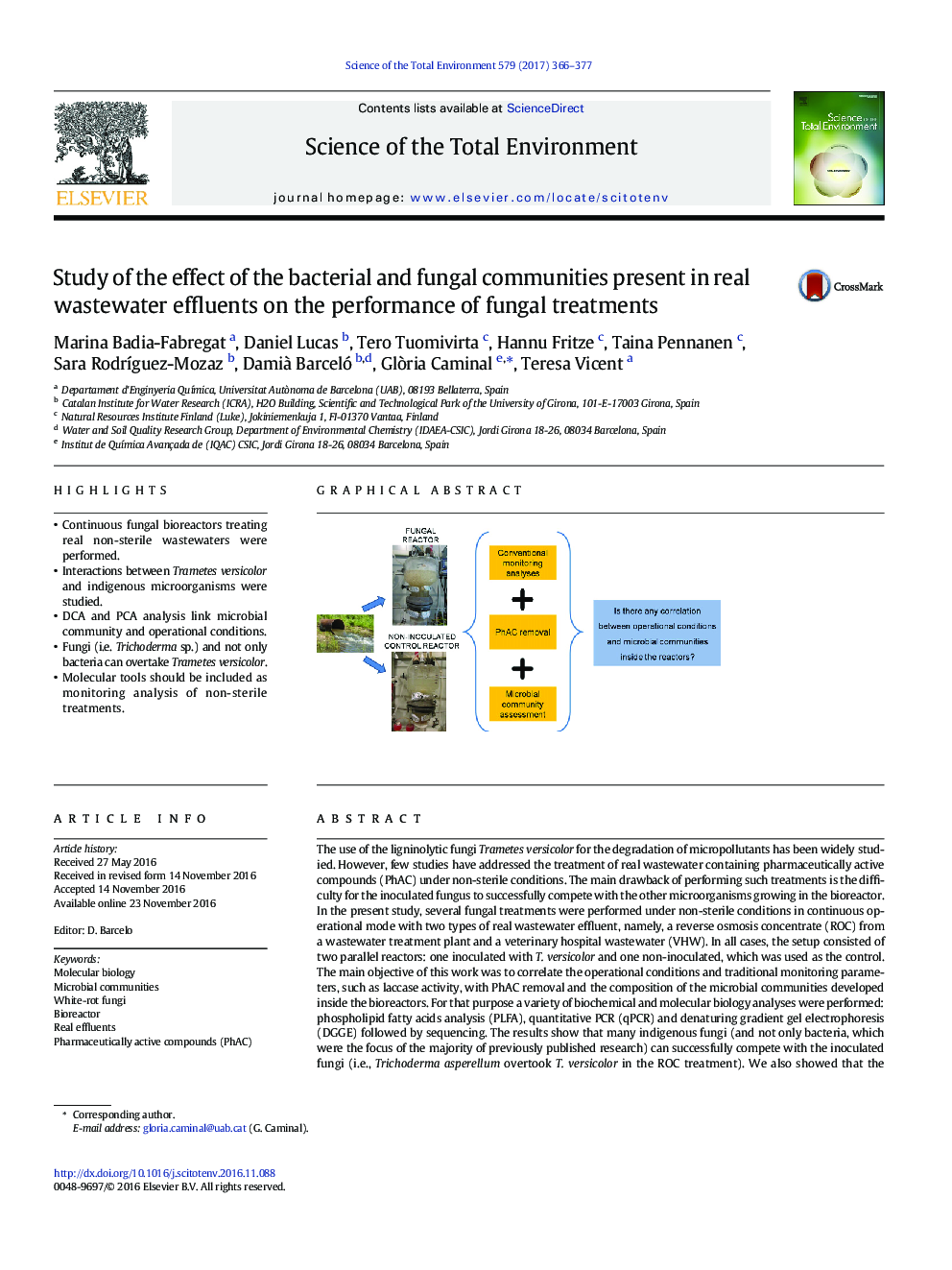| کد مقاله | کد نشریه | سال انتشار | مقاله انگلیسی | نسخه تمام متن |
|---|---|---|---|---|
| 5751389 | 1619712 | 2017 | 12 صفحه PDF | دانلود رایگان |
- Continuous fungal bioreactors treating real non-sterile wastewaters were performed.
- Interactions between Trametes versicolor and indigenous microorganisms were studied.
- DCA and PCA analysis link microbial community and operational conditions.
- Fungi (i.e. Trichoderma sp.) and not only bacteria can overtake Trametes versicolor.
- Molecular tools should be included as monitoring analysis of non-sterile treatments.
The use of the ligninolytic fungi Trametes versicolor for the degradation of micropollutants has been widely studied. However, few studies have addressed the treatment of real wastewater containing pharmaceutically active compounds (PhAC) under non-sterile conditions. The main drawback of performing such treatments is the difficulty for the inoculated fungus to successfully compete with the other microorganisms growing in the bioreactor. In the present study, several fungal treatments were performed under non-sterile conditions in continuous operational mode with two types of real wastewater effluent, namely, a reverse osmosis concentrate (ROC) from a wastewater treatment plant and a veterinary hospital wastewater (VHW). In all cases, the setup consisted of two parallel reactors: one inoculated with T. versicolor and one non-inoculated, which was used as the control. The main objective of this work was to correlate the operational conditions and traditional monitoring parameters, such as laccase activity, with PhAC removal and the composition of the microbial communities developed inside the bioreactors. For that purpose a variety of biochemical and molecular biology analyses were performed: phospholipid fatty acids analysis (PLFA), quantitative PCR (qPCR) and denaturing gradient gel electrophoresis (DGGE) followed by sequencing. The results show that many indigenous fungi (and not only bacteria, which were the focus of the majority of previously published research) can successfully compete with the inoculated fungi (i.e., Trichoderma asperellum overtook T. versicolor in the ROC treatment). We also showed that the wastewater origin and the operational conditions had a stronger impact on the diversity of microbial communities developed in the bioreactors than the inoculation or not with T. versicolor.
224
Journal: Science of The Total Environment - Volume 579, 1 February 2017, Pages 366-377
